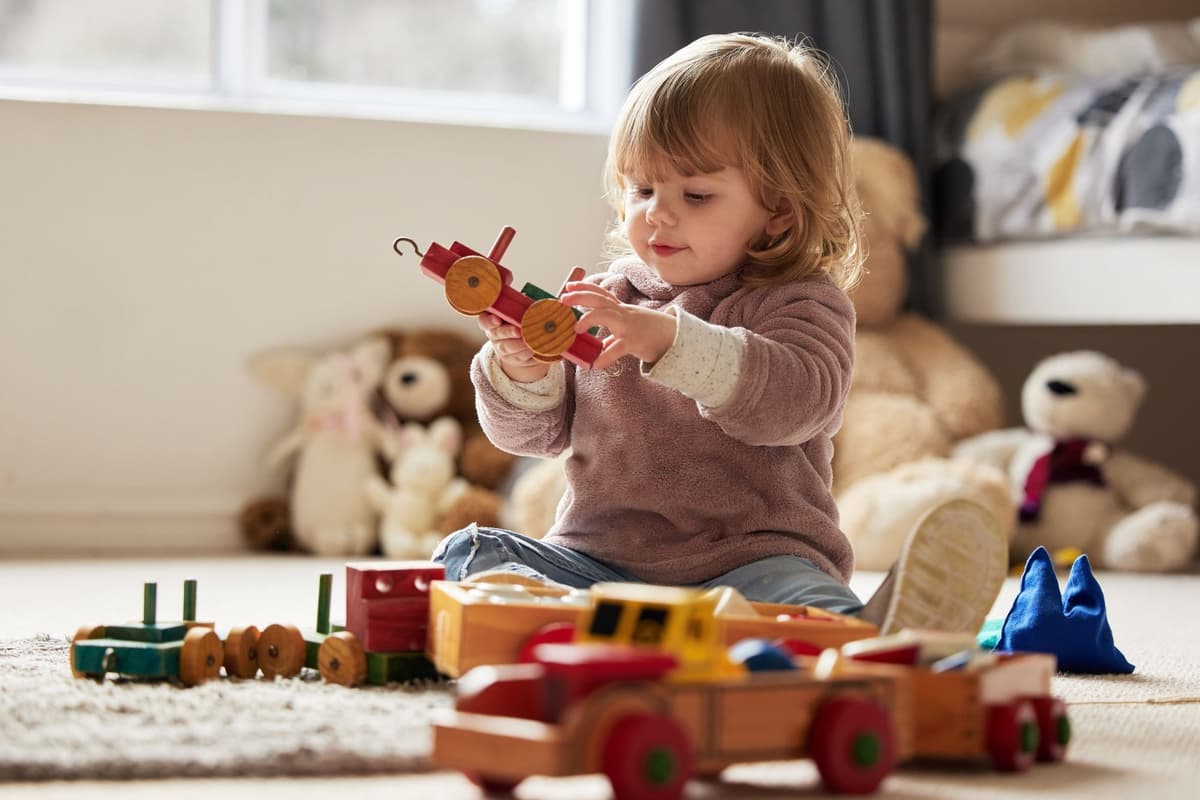Copyright thesouthernreporter

Mums and dads were quizzed on the longevity of their youngsters’ engagement with varying items – with things like shape sorters and car garages also not holding lasting interest. And 73 per cent revealed they think children’s attention spans are shorter than ever, with 18 per cent saying their kids can only remain engaged with an activity for less than 10 minutes. However, the poll of 1,000 parents of children aged two to 12, commissioned by kids’ audio player company Yoto, revealed creative toys including craft kits, books and things like balls or skipping ropes held them for the longest. To combat decreasing attention spans, the brand has launched gift bundles [https://uk.yotoplay.com/content-bundles] that include hours of kid-friendly audio content, as well as developing interactive audio cards with gaming and activities like drawing, baking and yoga. Clinical psychologist Dr Martha Deiros Collado has partnered with Yoto to reveal nine tips on things to consider ahead of Christmas when it comes to longevity for present purchases. She said: “The research has shown that parents have natural concerns about their children’s attention spans, something that’s front of mind this time of year with festive gift buying around the corner. Thankfully, there are a number of things you can weigh up to ensure the next big buy isn’t stuck on the uninteresting pile within days. Avoiding short-lived trends, opting for things that can be used in multiple different ways and choosing toys that can be shared as well as be used alone, such as magnetic tiles, can go a long way to combatting this.” Dr Martha also revealed looking at options that encourage problem solving to develop real world skills and items that can be used when on the move, so they’re not confined to being used purely at home. It also emerged 35 per cent of parents said they give how long something will keep their kids occupied for a great deal of thought before they decide to buy it. While 49 per cent look for things that encourage creativity and 36 per cent want something that offers the opportunity to educate them. Yet, 60 per cent have ended up buying something their child has no interest in whatsoever – with mums and dads ending up dissatisfied by the longevity of 58 per cent of what they end up purchasing. Interestingly, 69 per cent have bought a toy specifically to help improve their child’s focus and attention span. Interactive storybooks, puzzles and activity books were some of the most common products bought with this in mind. And 91 per cent agreed it’s important to ensure Christmas gifts capture their imagination for a long period of time according to the OnePoll.com data. Three quarters (75 per cent) wished they knew how to help their child grow their attention span, with 97 per cent considering it important to spark imagination and creativity within their child. Fifty-eight per cent advised other parents to encourage questions from their kids to keep them curious, while 54 per cent said it’s important to celebrate their imagination. While 50 per cent said it’s crucial to limit screen time. Jess Tarrant, content director at Yoto, said: “According to this research, parents are clearly putting a lot of thought – and even worry – into their choice of the ‘big present’. That’s why we want to help them when faced with the overwhelming options out there during this busy Christmas planning phase. It’s clear that engagement is top of the list when it comes to what might be under the tree – with encouraging creativity and imagination hugely important to a child’s development. But longevity is also crucial – so to be able to buy something that you really get value from and can grow with your child is the ideal." Dr Deiros Collado’s nine tips when buying toys this Christmas 1. Is this a trend? Try to avoid toys tied to short-lived trends. These are often a ‘fad’ that becomes quickly disposable when your child gets bored of it. 2. How many different ways can this be played with? Ask yourself: “Can this be used in different scenarios and help spark imaginative play?” Building blocks, magnetic tiles, and animal figurines can all evolve and transform as a child grows. 3. Is this toy sustainable? Well-made items last longer. Look for durable materials such as wooden toys and trusted brands which are also safer and more thoughtfully made to last. 4. Will it hold your child’s attention for years to come? Some toys are designed to evolve alongside your child’s growth and development. Look out for toys that are adjustable, adaptable, and will continue to appeal to your child as they get older – such as a Yoto Player. 5. Does it offer variety? Toys that only do one thing (e.g., a puppy that yaps and walks along) quickly engage little ones but they lose appeal fast. Look out for items that encourage exploration and problem-solving such as shape sorters, building bricks, beads, and puzzles. 6. Can your child play with it alone and with others? Toys that bring people together can be used with more than one child, and foster communication, cooperation, and interaction spark imaginative play and are often used across age groups. 7. Will your child build lifelong memories? Consider the experiences your child will have with a toy and the memories they will carry into adulthood. Most adults remember (and still have) favourite toys that spark nostalgia and joy filled moments from childhood. 8. Does it encourage thinking or solving problems? Toys that help children develop real-world skills can build confidence through play. Things like child sized baking sets and gardening sets to grow your own plants can support your child in learning and building skills. 9. Can the toy be used in more than one context? Items that are easy to store or you can travel with are more likely to be used regularly and in multiple contexts. This can prevent them getting discarded due to inconvenience and be toys your child chooses to take out with them too.



